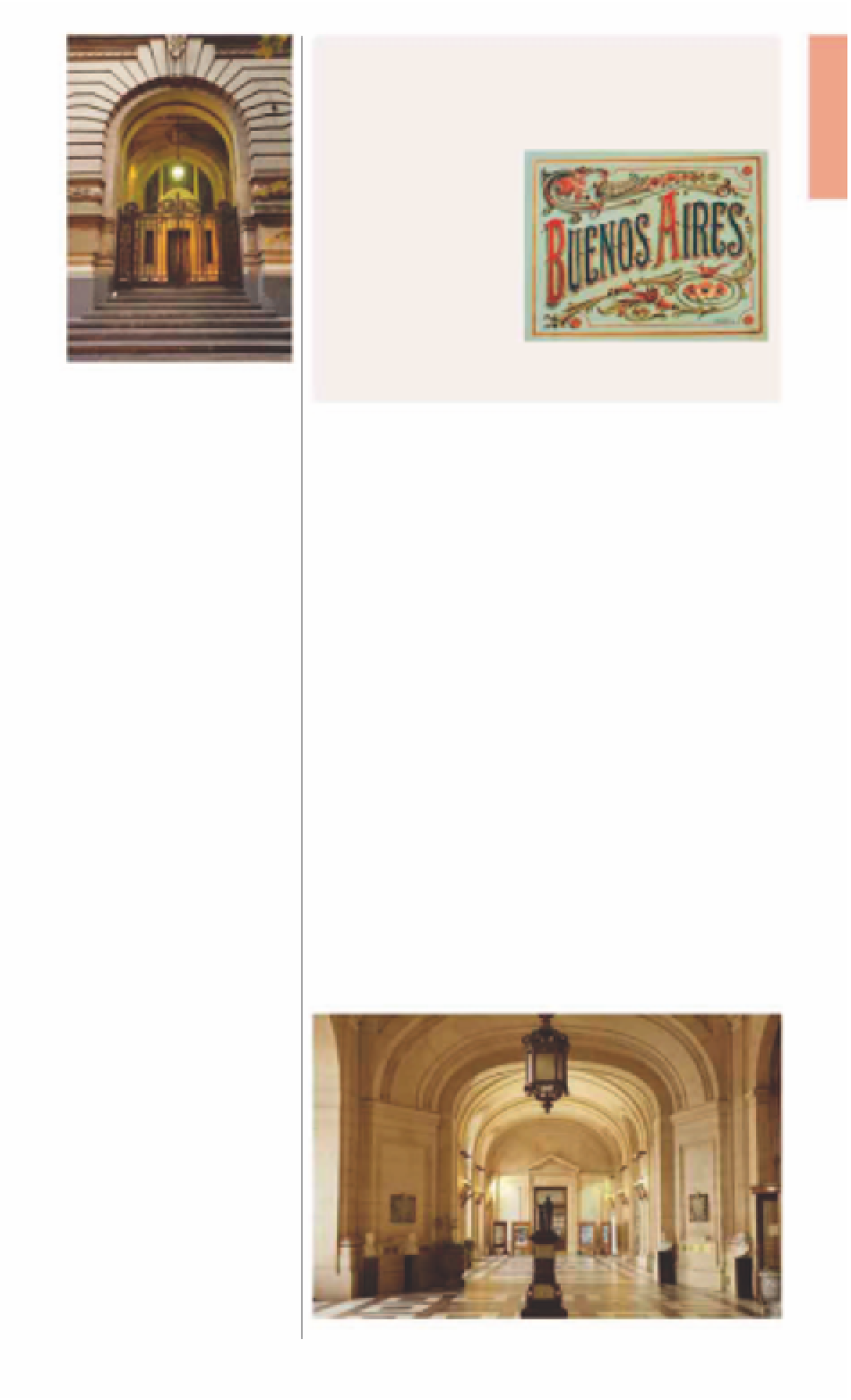Travel Reference
In-Depth Information
Fileteado
Characterized by florid garlands and scrolls of bright colors,
often including the sky-blue and white hues of the national flag,
fileteado
is a popular art form that is still seen on display in many
storefront windows. The
compositions sometimes
include texts taken from
local proverbs and sayings.
Banned in the mid-1970s
by the military government,
who preferred straight lines
and right angles -
psychological and
otherwise - it went
underground and is now
admired as a truly porteño
art form.
A poster in
fileteado
style displaying
ornamental scrollwork
The hallowed gates of the Colegio Nacional
de Buenos Aires
remodeled over the centuries,
the church that stands today,
Iglesia de San Ignacio
, dates
from 1734 and is the oldest in
the city. There is also a cinema
and a theater here.
Behind the church is the
Procuravuria de las Misiones,
where the Society of Jesus
stored grain and tools for their
missions in the northwest.
When the Jesuits were expelled
from Latin America in 1767,
Vertíz, the viceroy of the day,
had a school built on the site,
the Real Colegio de San Carlos,
which educated many of the
key players in Argentinian
Independence. In 1863, it was
renamed as the more secular-
sounding
Colegio Nacional de
Buenos Aires
, and is still
considered the city's most
prestigious high school.
of the currency in 2001, the
same streets were the target of
protesters, who marched
banging on pots and pans.
There are two small museums in
the area - the
Museo Mitre
was
the 19th-century residence of
Bartolomé Mitre, onetime
president and founder of the
La Nación
newspaper, while the
Museo de la Policial
covers
the long history of crime and
detection in Buenos Aires.
1888, although the building was
only completed 40 years later.
Occupying a single block, this
elegant palace, now known
simply as the Correo Central,
symbolized both the increasing
wealth of the country and its
people, and the particularly
important role of Buenos Aires as
a port and communications hub.
Sweeping mansard roofs,
characterized by two slopes on
each of the four sides, long
vertical windows, and the south-
facing façade, with its four pairs
of columns, all echo the classic
elements of the style, which
became popular in the Americas
after the 1893 World's Columbian
Exhibition in Chicago. This was
held to celebrate the 400th
anniversary of Columbus's
discovery of the New World.
Currently closed for elaborate
reconstruction, the Correo is set
to reopen as an arts and music
space called Centro Cultural
Presidente Néstor Kirchner.
0
Correo Central
Sarmiento 151.
City Map
3 E4.
Te l
(011) 4891-9191.
Leandro N.
Alem.
Closed
for construction work.
The Palacio de Correos y Tele-
comunicaciones is considered
the most imposing of all Buenos
Aires's buildings in the French
beaux-arts style. The architect,
Norbert Maillart, was a French-
man, commissioned to build it
by President Miguel Juárez in
9
La City
City Map
3 E5.
Catedral, Florida,
Perú. Museo Mitre: San Martín 336.
Open
1-5:30pm Mon-Fri.
Museo
Policial: San Martín 353.
Open
Feb-
Dec: 2-6pm Mon-Fri.
Closed
Jan.
∑
&
museomitre.gov.ar
The Microcentro - a labyrinth of
narrow lanes adjacent to Plaza
de Mayo, populated by bankers
and merchants - is nicknamed
La City due to the British influ-
ence on Argentina's banking. In
the 1980s, when inflation sky-
rocketed, money changers plied
their trade outside the banks,
offering better rates to despe-
rate citizens. With the collapse
The elegant corridors of the Correo Central



































